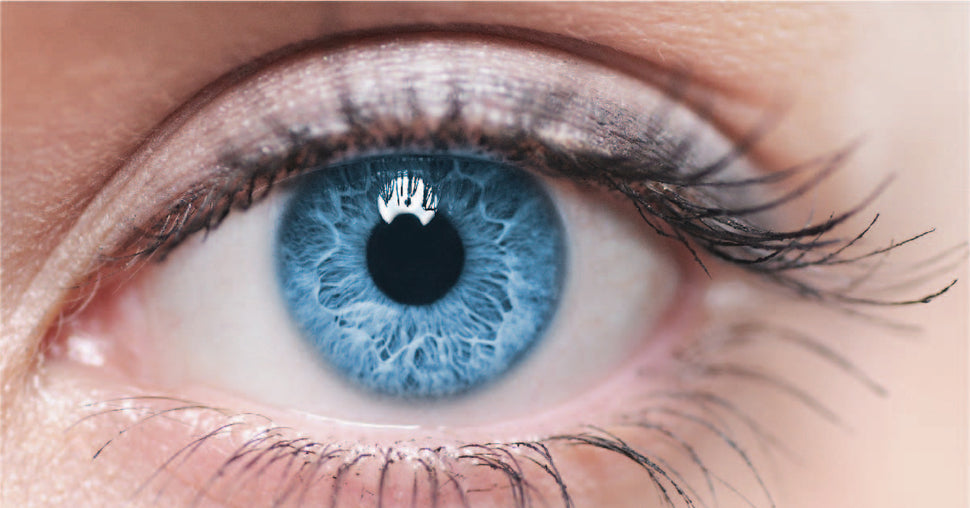Eye Floaters: A Complete Guide
04 Apr 2021
Eye floaters are a common problem, especially with aging or if you suffer from diabetes, have experienced eye trauma, or have recently undergone eye surgery, such as for cataract. In most cases, the condition is not a cause for alarm, but sometimes can be indicative of an underlying health issue. But what are floaters? Eye floaters refers to the appearance of anomalies in your field of vision, usually in the form of spots, rings, or weblike lines. For most people, they simply look like black or grey specks that drift through your field of vision, seeming to move away when you try to look directly at them (1). To better understand what are floaters, it helps to know the causes of eye floaters.
Causes of Eye Floaters
Eye floaters can occur for a variety of reasons, some of which are serious.
Aging: This is the most common and non-threatening cause of eye floaters. With aging, there are changes in the jelly-like substance or vitreous that fills the eyeballs. Some of this substance liquifies to an extent, pulling away from the eyeball, shrinking and sagging to become clumpy and stringy. It then acts more like debris restricting the passage of light through the eye and the resultant shadows appear as floaters.
Posterior Uveitis: This refers to inflammation of the back part of the uvea, which is the middle layer of the eye, just behind the sclera or white part. The inflammation can lead to a release of debris that appears in your vision as floaters. This condition can develop because of certain infections and inflammatory disorders.
Bleeding In The Vitreous: The leakage of blood into the vitreous can result in eye floaters as the blood cells may cast shadows on the retina. This problem is usually linked to eye injuries, diabetes, hypertension, or blockage of blood vessels.

Retinal Tears: As part of the vitreous liquifies and sags it can sometimes pull at the retina with enough force to cause tears. If the condition is not treated swiftly, there is a risk of retinal detachment, in which fluid accumulates behind the retina causing it to detach from the back of the eye. Retinal detachment is a serious condition as if left untreated it can result in permanent loss of vision.
Help Your Vision By Clicking Here
Eye Surgeries And Medications: In some types of vitreoretinal surgeries, silicone oil bubbles are added into the vitreous and these may appear as floaters (2). The injection of some medications into the vitreous can also increase the risk of floaters because of air bubbles that form in the vitreous.
In rare cases, causes of eye floaters may also be linked to the formation of crystal-like deposits in the vitreous, eye tumors, or autoimmune conditions that cause retinal or vitreous inflammation.
Symptoms of Floaters
The main symptoms of eye floaters include the following:
- The appearance of small dark specks or shapes in your field of vision or the appearance of floating stringy material.
- Dark specks or spots in your vision that seem to move when you move your eyes and seem to disappear from your field of vision when you try to focus on them.
- The spots or visual disturbances become more noticeable when you’re looking at a plain bright background, such as a plain white wall or a snow-covered field.
- Stringy formations and small shapes that seem to drift around and eventually settle down outside your line of vision.
Treatment of Eye Floaters
When eye floaters are linked to underlying causes such as diabetes or inflammation, the underlying condition must be treated to relieve the problem. In most cases, the problem of floaters in vision is linked to aging and will not require treatment. Although the problem can be an annoyance, over time your eyes adjust to the phenomenon and you will no longer notice them. If the problem causes any kind of visual impairment, you can consult an ophthalmologist to get it treated. There are two main eye floater treatment options, which includes:
Surgery: An ophthalmologist can perform a vitrectomy, a surgical procedure in which a small incision is made to remove and replace the vitreous with a solution that is aimed at preserving the eye’s natural shape (3). However, this may not get rid of all floaters and new ones can also develop after the procedure. Moreover, the surgical procedures can cause side effects like bleeding and retinal tears that require further treatment.
Laser Treatment: Ophthalmologists can use special lasers to break up floaters that are in the vitreous, making them less noticeable. The procedure can have mixed results, with patients reporting improvements in vision, while others experience no benefits. This procedure also comes with its own set of risks, with retinal damage being the main side effect if the laser is not aimed properly. The procedure is only used to treat eye floaters in rare circumstances. (4)
Recommended Reads:
https://www.setu.in/blogs/lifestyle/the-most-effective-home-treatments-for-dry-eyes/
https://www.setu.in/blogs/habits/maintaining-20-20-vision-in-2020-my-personal-hacks/
https://www.setu.in/blogs/lifestyle/yoga-for-your-eyes/
https://www.setu.in/blogs/lifestyle/what-your-eyes-really-need-spoilers-not-carrots/
https://www.setu.in/blogs/lifestyle/tips-to-take-care-of-your-eyes-when-you-wfh/

Skin: Renew - Glutathione
- ₹1,694
- ₹1,694
-
₹2,200 -
You Save:
₹506 (23%)
Categories
- Choosing a selection results in a full page refresh.
- Press the space key then arrow keys to make a selection.
this is the sidecart








